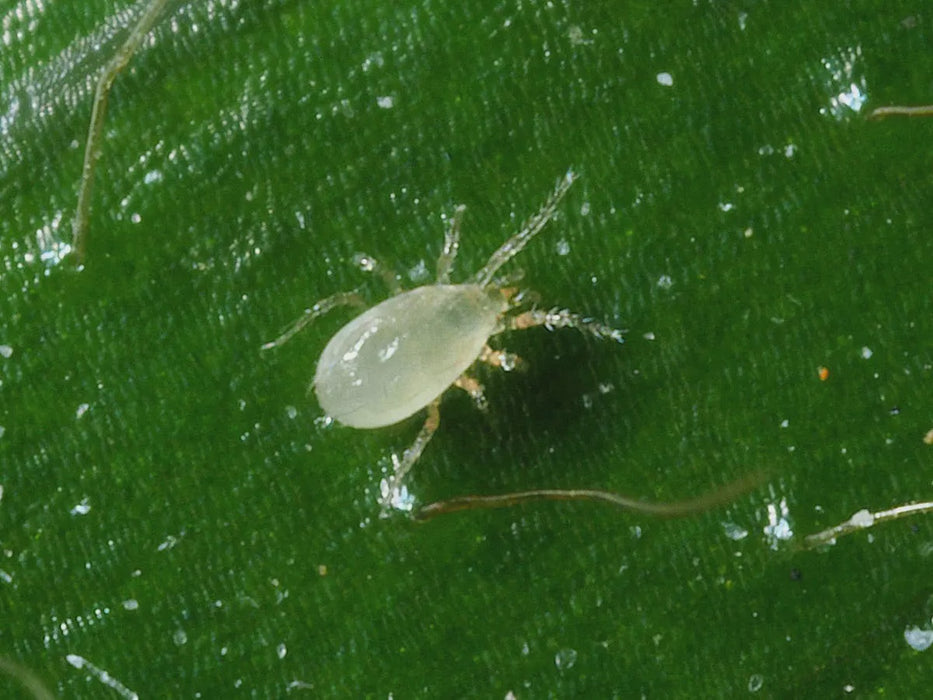
Montdorensis
!!PLEASE NOTE THERE IS A $85 QUARANTINE INSPECTION FEE + SHIPPING FOR ALL BUGS FOR BUGS ORDERS TO WESTERN AUSTRALIA!!
A predatory mite for the control of thrips and whitefly. Supplied in tubes of 10,000.
Montdorensis (Typhlodromips montdorensis) are Australian predatory mites that feed on small insects, mites, pollen and honeydew. They have proven to be very effective biocontrol agents in many crops and are now used internationally. Montdorensis prey on the eggs and juvenile stages of thrips and whitefly, making them ideal for preventative control of these pests. They also offer strong secondary suppression of spider mites, broad mite and russet mites.
Montdorensis are small (<1 mm), pale, pear-shaped mites. The eggs are clear and oval. They are laid on the underside of leaves (often on hairs), under the calyx of fruit and sepals of flowers and in other protected areas. At 25°C Montdorensis take 6-7 days to complete their lifecycle. A female mite kills an average of 14 thrips larvae per day.
Target pests
Montdorensis are primarily used to control thrips and whitefly. They also provide secondary suppression of other pests including spider mites, broad mite and russet mites. Key target pests include:
- Western flower thrips
- Onion thrips
- Tomato thrips
- Melon thrips
- Greenhouse whitefly
- Silverleaf whitefly
Advantages
- Rapid population growth in crops with pollen
- Feed on a range of pests
- Survive at low prey densities
- Can be introduced preventatively
Suitable crop environments
Montdorensis have been used successfully in many protected crops including cannabis, capsicums, eggplants, cucumbers, strawberries and cut-flowers. They can also be used in non- protected crops, provided temperatures do not remain below 10°C for extended periods. Montdorensis predatory mites are also suitable for release onto indoor plants.
They prefer warm conditions and their activity ceases below 11°C. Adults can tolerate 45°C in greenhouses but eggs and younger stages perish at this extreme. The optimum temperature range is 20-30°C. Short winter days and cool nights will not induce hibernation. As long as the mean daily temperature is warm, this predator will keep working all year round.
